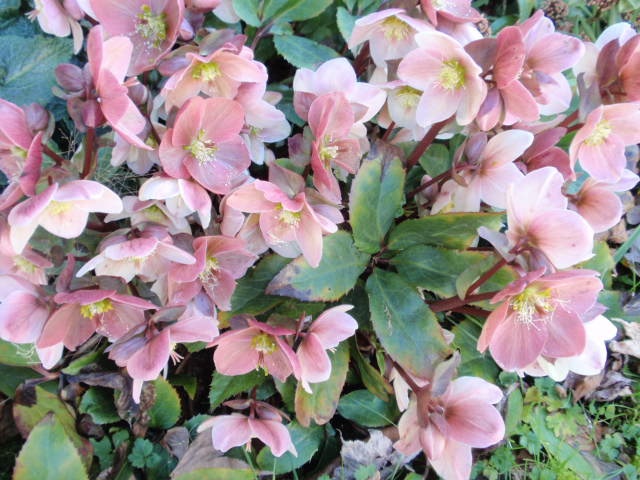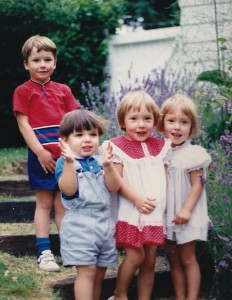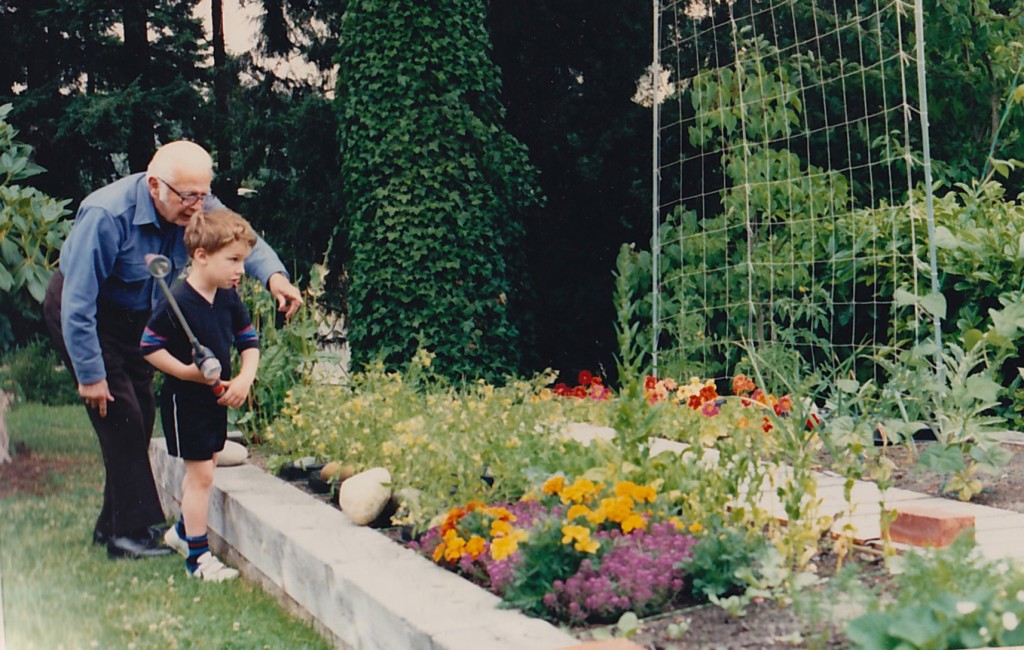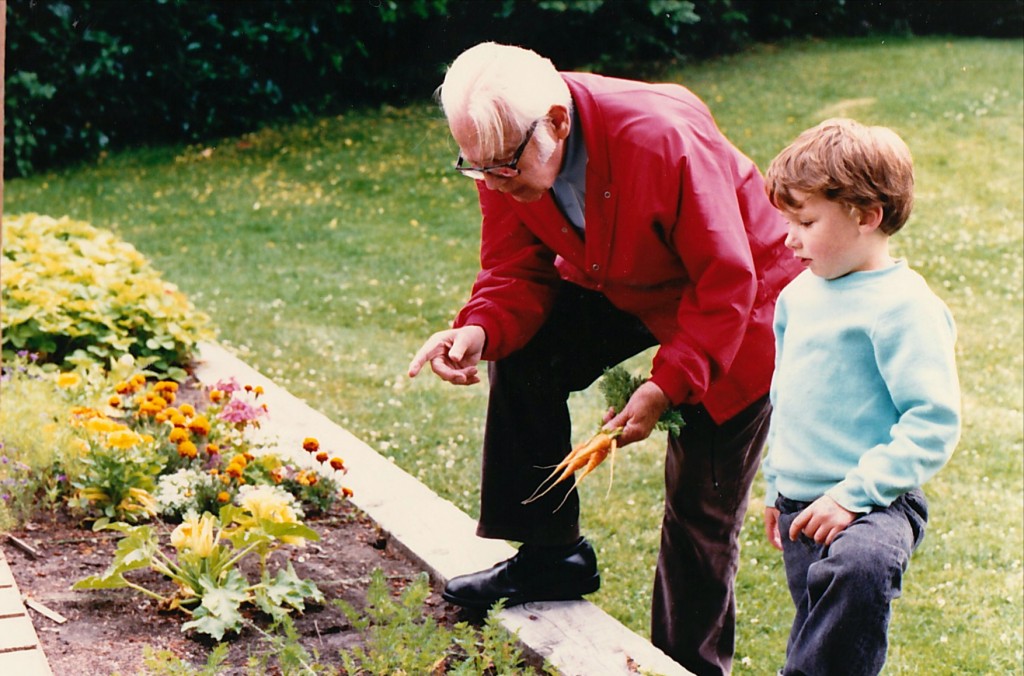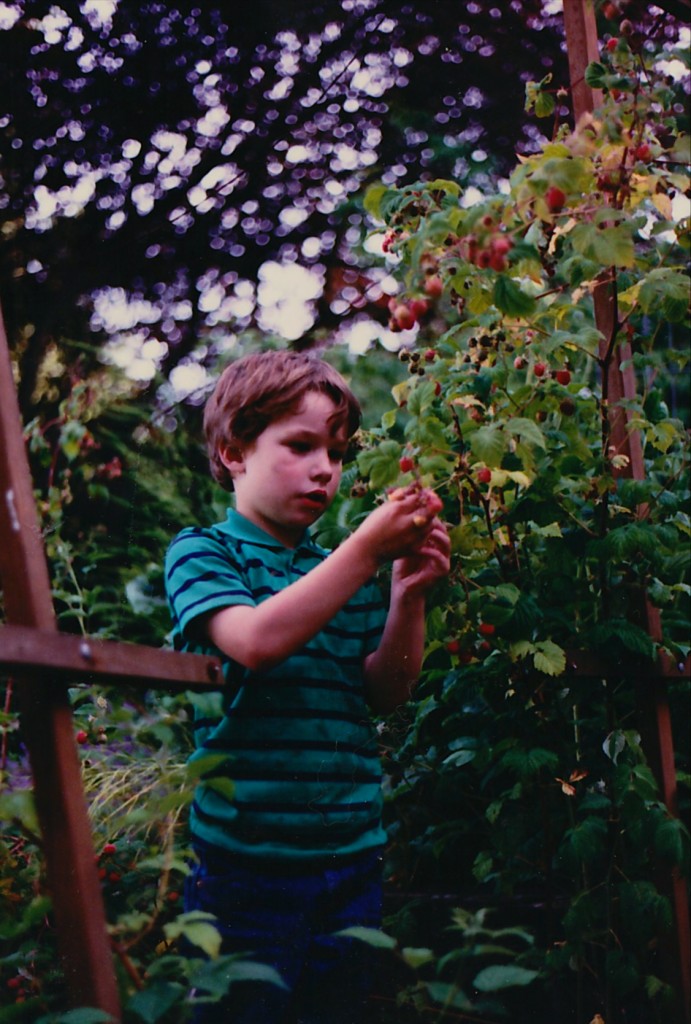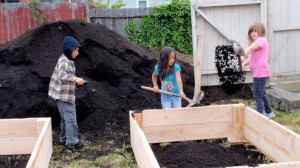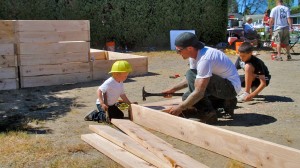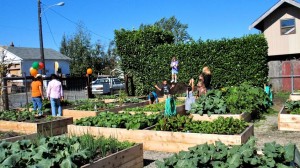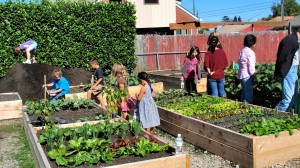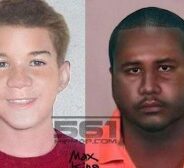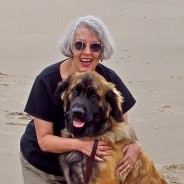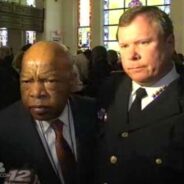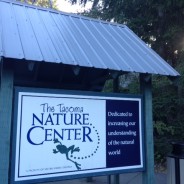Of Gardening Stores, Gardening Catalogs, and Hope

Hellebores are among the first perennials to bloom around our yard, sometimes showing their downward facing flowers as early as January in our mild maritime climate. That’s also the time that the gardening catalogs start coming in the mail, so those two harbingers of warmer, sunnier days ahead are welcome lead-ins to the promise of post-winter life. The early blooming hellebores and the garden catalogs also remind me, in a gentle and warm way, of my parents.
One of the greatest and most unexpected joys of my life occurred when my parents, then in their seventies, made a transcontinental move to be a regular part of the lives of the very young grandchildren that had finally appeared in their lives after decades of hopeful waiting. Despite their age and the necessity of their leaving behind a dense network of dear family and friends, they voluntarily, in a spirit of adventurous joy, moved from Buffalo, New York to Washington State to spend the last decade of their lives with their daughter and son and their families. As they saw it, they could finally revel in being Grandma and Grandpa to those four young children, two of them twins, all born within three years of each other.
The house my parents lived in was on our block, just a brief walk down our street and up the hill, and there in the spacious back yard my father had a raised bed garden put in so that, for the first time in his life, he would have a place (and now that he was finally retired, the time) to try his hand at being a backyard gardener. While my mother’s domain was that of annual flowers, particularly those she planted in the flower boxes which she endlessly fussed over, my father dreamed of the tomatoes, raspberries, carrots, and radishes we would harvest.
And harvest we did, though certainly not by the bushel-basket full. In any case, I loved helping him with the gardening work, and since he and I were exactly on the same page when it came to dreaming of “next year’s perfect garden” when those early spring catalogs started coming in, we ordered more gardening tools than our little raised bed garden could possibly need. (My mother had many a wry comment to make when the brown UPS truck pulled up yet again with another box she had not ordered.)
Those memories – now decades old – still warm my heart when certain triggers touch my soul. Now that it’s been such a long time since my parents were alive and able to engage in gardening activities, it is all the more precious to me to hear my father’s words in my head as new piles of the latest gardening catalogs clutter my end tables and bookshelves. “Every year is a new beginning” my father used to say, as we would freshly hope, once again, that THIS year the harvest would be totally outstanding, the weeds would be easily conquered once and for all, and nature would be nothing but provident to us, with minimal work on our part.
With that thought in my head, this past weekend I drove to three of my favorite garden stores to “look around” (always a deadly trap; see my post on Williams Sonoma as a Longing Machine). Yes, I bought a few replacement plants for patio planters now mourning the death of their last occupants, and I also bought some needed supplies as well. But what struck me most of all in each of the stores this time was not the bursting splashes of color the decorators had so carefully staged through each of the stores, though those artfully positioned displays of plant life were certainly lovely and appreciated.
No, this time what I was most drawn to notice was the intergenerational interaction I saw in each of the stores, sometimes between a parent and a small child, other times between an adult child and an older, perhaps wheelchair-using parent. In one case a little girl was excitedly calling to her parents as she ran back and forth among the herb display, particularly noticing and commenting on those that “smelled so good.” I showed her how to rub the Corsican mint gently with her finger tips and then smell her fingers. She was so delighted that she ran to let her mother and father sniff, and they, in turn, ended up buying the plant so that she could continue loving this producer of olfactory beauty in her own yard.
In other cases, I heard conversations, sometimes in English, sometimes in Chinese, sometimes in Spanish, between people I judged to be son and father, son and mother, daughter and mom. Even when I could not understand the conversation, it was easy to watch and see what was being demonstrated when a particular tool was picked up and its use was pantomimed by the adult child for the benefit of the elderly parent: “this will make things easier for you.”
Much more than when my parents were still alive, I have gotten involved, in these recent years, in campaigns to involve more people in growing their own food – or at least caring where their food comes from. My daughter-in-law and son are members of a community garden that they and others have built on one of several formerly vacant eyesore lots which the city has made available for this purpose. I take part in education efforts (both online and face-to-face with my students) about GMOs, farmers’ markets, slow food movements, and edible landscaping. I read those incoming gardening catalogs now not only with myself in mind, but also with the thought that gardening activities (e.g. saving water by xeriscape designs, replacing lawns with food gardens, involving the young generation in seed-to-meal schoolyard garden projects, getting involved in multi-generational gardening activities) can truly nurture us as whole beings, and not just hungry consumers.
And always, my father’s voice is what I hear when I feel particularly hopeful. “Every year is a new beginning.”
Cheers for America’s Children of 2020!
How rousing and exhilarating is the spirit and energy of the many-hued cast of the musical Hamilton! How well it mirrors – in advance – the demographic change predicted to occur in the year 2020. That’s when, according to the US Census Bureau: Most of the nation’s children will not be of European descent. Or, to put it another way, Children of solely European descent or origin will be fewer in number in the US than the children of indigenous, and/or African, and/or Asian descent or origin, and certainly, much fewer in number than the children of “mixed” ancestral heritages. Question for all: What does this mean for me and “my people”? Do I feel excited by this change? Eager to add more shadings to my own family’s repertoire of choices and imaginings? Or am I so frightened that I can only hope that walls, deportations, and exclusions will somehow stave off the inevitable just a little bit longer? While we consider these options, families as varied as the cast of Hamilton are being formed every day, and they are growing. How can I not cheer their beautiful...
read moreA Tale of Two Faces
What would have happened if they looked like this? Imagine if the boy on the left was found dead, incontestably shot and killed by the man on the right. How differently the course of events would have gone! Racism is, at its deepest core, about the pre-linguistic, pre-behavioral, “in your gut” feelings of (fully human) “people like us” versus “those dangerous others” (who may just be less-than-human, and thus are all the more dangerous, cunning, and animalistically endowed). At a level that does not easily allow for conscious self-examination, there is an unspoken fear of “their” danger to “us” which motivates words, actions, laws, and policies regarding “them”. The use of racial epithets, the creation of behavioral traditions (e.g. residential segregation) and the enactment of legal tactics (e.g. Jim Crow voting strategies) all stem subsequently from those deep-seated concerns about keeping “those others” (safely) in their place. It is not easy to root out these elements of racism in ourselves and in our families. All humans like to think of themselves as “good people”, and particularly among people who are educated and tolerant, it may come as quite a shock to come to find out that our assumptions about safety and danger have been, since earliest childhood, shot through with learned, though seldom explicitly articulated, associations connected with skin color and physical appearance. Furthermore, when white people hear the word “privilege”, we/they fail to understand the real scope of this concept (which goes far, far beyond the economic background of one’s immediate or ancestral family members). Privilege is first and foremost about not having to worry how the world works (differently) for “people like us” (as opposed to “people who make the rules”). You teach your teenager how to drive, and if you are white, you don’t even think of adding life-or-death instructions (in minute detail) about how to act when a policeman pulls you over. Your kid goes out of the house dressed the way Mark Zuckerberg was dressed on the floor of the New York Stock Exchange and it never occurs to you that somebody with the power to arrest, shoot or even kill your son will defend his actions because “the kid was dressed like a gang-banger”. Look again and again and again at that Photoshopped reverse-colored picture of two families’ sons. If George Zimmerman’s face were really as dark-skinned as it is in this picture, and if Trayvon’s face were light colored, do you really think that Zimmerman would have been released without charges that night? But those Photoshopped skin tones are not what the police, and much of America, actually did see. What resonated with people who cheered Zimmerman’s acquittal was the greater “probable danger” coming from the dark-skinned boy. And not because of the chunk of sidewalk....
read moreForever in Our Hearts – Loki
This is the piece I wrote to be published in the “Forever in Our Hearts” section of the September, 2013 issue of the quarterly magazine, the Leo Letter (the official publication of the Leonberger Club of America) To write about our magnificent communicator, Loki, requires me to use words, which of course Loki could never produce. But that never stopped him from understanding our words and all of our other ways of communicating, both consciously and unconsciously, and of communicating his thoughts and feelings back to us In the days since his death, in between my audible sobs and silent tears, I have also smiled and even laughed about our Loki-boy. We had many affectionate names for him: Lokenberger, Puppy Boy, Buddy, Sweet Boy, Lok-man. Looking over some of the many pictures I have of him brings back so many memories of experiences we shared. We did a little showing when he was younger, but that did not seem to be his thing (and I could not bear even the slightest criticism of my “perfect” boy). We also tried sheep herding, tracking, and carting, and while Loki was genuinely excited to leap into the car for those excursions, I think what he really loved best about those activities was simply the quality time we spent together doing them. And that’s where his almost supernatural communication abilities came in. First of all, he had a direct line to tap into the heart of each one of his family members. With my husband, who is retired and was the key person in Loki’s daily life while I was at work, Loki “did lunch” every day, reminding him when the two hands of the clock were pointing toward twelve. For my older son Erik, who loved long, athletic walks at dusk among the trails through the old growth forest in Point Defiance Park, Loki was a woodland explorer. On one such excursion (this one in broad daylight), Loki and Erik came upon four drunk twenty-somethings ahead of them on the trail right near a steep ravine. Loki took no chances and, for one of the only times in his life, he growled thunderously at the group, showing off those impressively huge fangs. “Hey man, is that a guard dog?” one of them asked nervously. With delight, Erik boldly lied and said “Yes” and they took off. For my younger son Anders, and his wife Bev (Loki’s “special person” ever since she first came into Anders’ life), Loki was a goofball who loved their exuberance, especially when they took him to a nearby gravel beach on Puget Sound and buried him up to his neck in sandy gravel, laughing all the way. Loki laughed too. For me, Loki’s communication skills ranged from the unbelievable to the downright eerie. Like many smart dogs, he knew the meaning of many words, and for those words we dared not say but spelled instead (“ice cream”, “Bev”, and “car” in particular), it took him very little time to figure out what we were trying to spell by the time he heard the first two or three letters. As for the eerie, how did he know, correctly, every time, that it was Bev who was on the other end of the phone call, calling...
read moreTo Fellow Members of the Leonberger Club of America: My Loki is Gone
This is the email I sent to the LeoList (an email list for members of the Leonberger Club of America) announcing Loki’s death. A great heart has stopped forever – our Loki boy’s… Our huge-hearted, people-loving Loki boy died yesterday (Tuesday) morning at the emergency animal clinic, leaving us in grief and tears. We’ve known for more than a year that he had laryngeal paralysis, but he was actually doing relatively well, even without a tie-back operation. We got a slow-feed bowl and fed him several small meals throughout the day, and kept his walks short and in the cool part of the day – which is usually not difficult to do here in the cool Pacific Northwest. It also helped that his personality was very calm. We had been having a wretched hot spell for the past few days, which peaked on Monday. On hot days Loki would always prefer to spread out on the cool slate in the entryway of our house and just lay there until the evenings got cooler. So that’s what he did Sunday and Monday, and it seemed quite normal. And when Loki, who ordinarily would eat anything at any time, and would practically point to the clock if a meal was 5 minutes late – didn’t eat much on Sunday or Monday, we all thought it was just the blasted heat (no AC). Monday night when it finally had cooled off enough for me to let him lie on his favorite patch of grass outside, he just plopped down and panted, but I figured it was still the heat (it had been in the mid 90s during the day, and all of us here in the PNW think it’s roasting when the thermometer hits 76). But this time he just seemed different. At one time he got up to do his business, and I was shocked that it was bad-smelling diarrhea. Loki had always had the healthiest digestive system in the world, with nary an instance of diarrhea in his nine and a half years. But again, could it be the heat? In any case, I spent a precious half-hour with him, talking to him gently, telling him I loved him, and then something told me to tell my sons to do the same. Our older son (who lives with us) came outside and also spent time talking and loving him (saying good-bye actually), and then I called my younger son to come over, and together we decided to call the emergency animal clinic to see if they thought we should bring him in right away. They did. The timing was critical, not only for Loki, but because both of my sons would be leaving for different out-of-town trips Tuesday or Wednesday, and with my husband only able to walk unsteadily with a walker, I would have no one to help me get Loki in and out of the car if he would have any trouble. He did manage to get in and out of the car by himself, and even seemed happy to be “going for a ride” at midnight. When the vet saw Loki, he noticed his abdomen was somewhat swollen (we were pretty sure it wasn’t bloat because he didn’t have any of the other signs, and he did...
read moreThe Montgomery Police Badge, the Harlem Shake, and Other Post-Pain Performative Gestures
Two recently televised events – Melissa Harris-Perry’s reaction, on her show, to the Harlem Shake dance craze, and Montgomery, Alabama Police Chief Kevin Murphy’s public apology to civil rights veteran Representative John Lewis – both caught my eye as being surprisingly relevant to the book project I am working on now regarding deadly prejudice in an entirely different historical and cultural context. The puzzle I am grappling with in my own work is deeply personal. As a Polish-American anthropologist who has spent over a decade teaching college students about genocide and the Holocaust, I want to be critically honest about the sociological workings of anti-Semitism in Poland, particularly around the time of the Nazi occupation there. At the same time, however, I still want to nourish my family’s connection to, and pride in, the land of my ancestors. Yes, it is certainly possible for me to point out to students the great number of Polish citizens who have been recognized as “righteous among Nations” by Yad Vashem for their courageous work trying to rescue Jews at a time when such activity was punishable by death. But this kind of countering of one type of response (brave selflessness) against its opposite (capitulation to evil) has always felt unsatisfying to me, especially since I know that such deadly prejudice does not simply disappear when the war has been won, or when civil rights legislation has been passed. Hence my special interest in the two recent YouTube-mediated events I mentioned above. Neither one seems to have been planned as “proof” or “contradiction” of anything. Instead, both of them involve what I am interested in observing in a future trip to Poland: something that might be called “performative gestures.” These may be as simple as small objects or deliberate movements, loaded with significant meanings, given or enacted formally and publicly, or they may be a part of larger productions involving musical or dance creations involving the choreographed participation of entire ensembles of performers. http://youtu.be/mIgzzHOQWiA In respect to the first example cited above, let us pay attention to the way Harris-Perry contextualizes these kinds of performative gestures: The Harlem Shake has a history and a trajectory embedded in the authentic, lived urban experience…. You have not seen the Harlem Shake unless you have seen kids on the New York Subway performing the intricate, fast-paced, and on-beat moves while maintaining balance on a moving train. Now this is about more than the proper designation of a popular dance. It’s about cultural appropriation. When communities create original art, they have a right to some sort of control over its definition… Creative interpretation is expected to respect certain boundaries. That’s what conveys the respect….. This is especially true with respect to the long history of voyeurism and appropriation of Harlem’s artistic innovations. Harlem has given birth to some of the nation’s most distinctive and original art – music and literature. And just as surely as Harlem has innovated, it has been invaded by those who come to Harlem with little sense of history or social context and no desire for political or economic solidarity. Think of the original Cotton Club of the nineteen twenties. There it sat on One Hundred Forty-Second and Lenox…. But only white patrons were allowed. No member of the community could sit and...
read moreMatty Brown – BIPOLAND
From Seattle-based filmmaker Matty Brown: “I chose to not only observe present-day Auschwitz, but also present-day Poland, document both, and show them as I felt them…knowing the strength of these people who looked forward and fought tooth and nail so the new generations could live these beautiful lives today inspires me so much. This is my tribute to Poland, its people, and the ones who perished in World War II.” Music by Philip Glass “Tirol Concerto for Piano and Orchestra: Movement II” Performed by Dennis Russel Davies BIPOLAND from Matty Brown on...
read moreWilliams-Sonoma as a Longing Machine
Back in July, Carina Chocano wrote an intriguing piece, “Pinterest, Tumblr, and the Trouble with ‘Curation’” about the “curation” or reblogging of other people’s ideas and images on sites such as Tumblr and Pinterest. The line in her piece that smacked me with its perfect arrangement of words was this one: “In other words, your average Pinterest board or inspiration Tumblr basically functions as a longing machine.” “That’s it!” I responded, like Charlie Brown when he recognized the perfect appropriateness of the precise word which “The-Doctor-Is-In” Lucy had used to diagnose him in that famous Christmas video. Williams-Somona is a ne plus ultra longing machine! For years now our kitchen table has hosted, often for several days at a time, the various Williams-Sonoma catalogs that come in the mail, from month to month, from that wonderland. But it is holidays most of all which serve as prime time for generating this exquisitely staged and precisely calculated siren call to the neurotransmitters. And this year’s holiday season catalogs were carrying for me a particularly heavy weight of additional baggage, because only last month, during a trip to San Francisco’s Williams-Sonoma Union Square flagship store, I had climbed up and down those four flights of maple hardwood stairs more than once in two days, transfixed by the thought that here, arrayed throughout these four floors, is all this beautifully made Stuff for me to desire. And that’s the point Chocano was making too. Longing is not so much a matter of lusting after the “stuff” itself, but rather, it’s a bittersweet, barely acknowledged background sense that one’s own life is somehow incomplete, imperfect, and lacking. The memories that flood back from, say, Christmases past, are complex, tangled skeins of sensory impressions. The tastes, smells, sounds, tactile feelings, and sights of “what was wonderful” and “what would BE wonderful, if only…” intertwine, luring us into believing that if, for example, I would set my Christmas dinner table using THIS beautiful platter, I would be able to bring back the most pure, innocent and expectant emotions of my past, linking it with my Christmas preparations right now, further enchaining these mostly inchoate thoughts and emotions to a fantasy future where nothing beautiful or lovely ever changes or is found wanting. Deep down, of course, we know this is a mirage. But oh! how we love to open that catalog, or even better, walk on that hardwood floor that clicks underfoot so appealingly, smelling the scent of the spices that have been added to the warmed and mulled apple cider being proffered at the counter. In other seasons there will be other fragrances, other colors, others images of perfection (chocolate Easter confections? summer barbecues?) hitting us not just through the obvious visual channels, but especially through our not-so-on-guard olfactory receptors. If art is the enjoyment of illusion, then Williams-Sonoma is a most artful longing...
read moreReflections about Snake Lake, Poland, Hate – and Your Senior Thesis
I wrote this blog post originally for the CSoc Blog – describing how Comparative Sociology faculty and senior thesis students spent a Saturday in early September from 10 am to 4 pm, working together to demystify the research process involved in producing a senior thesis. Just before leaving my house on a Saturday morning for the senior thesis retreat at the Tacoma Nature Center at Snake Lake on September 8, I briefly checked my Facebook news feed and came across this disturbing reproduction of a tweet that had been earlier posted to Twitter: “Someone needs to assassinate Obama…like ASAP #DieYouPieceOfShit” I barely had time to re-post the link and the quote with my own brief comment about the poster (“Right-wing hatred from a 16 year old girl”), before I had to leave for day’s event. But in the moments before the first CSoc faculty-led panel discussion started, looking out through the open half-wall of the upstairs meeting room where our retreat was being held, seeing the peace and greenery of the Snake Lake environs outside, and recalling so many nature-exploring trips to this place 20+ years ago with my then young sons, I was brought back in thought to the general theme of the book I will begin writing during my sabbatical this coming spring. The larger human issues I want to address in this book also concern hate, but certainly not just hate alone. Months ago I had typed three short bullet points into my Mac Notes program, trying to pin down for myself what my proposed book project was really about, deliberately avoiding all academic language and references. I will copy and paste those points below, revealing in this way the messy, repetitive, perhaps even contradictory and logic-challenging way that my mind begins a major writing project. This book will be about embracing, with love and enthusiasm, one’s personal ethnic heritage, even though such a heritage also demands a confrontation with ugliness and horror and raises questions about collective identity if not collective guilt. My awareness of these contradictory impulses came upon me slowly, over the course of more than a decade, as a result of my three trips to Poland (the last two with each of my sons, one at a time), including my very deliberate decision to go with them and show them the death camps at Auschwitz as well as much more pride-affirming Polish historical sites. This book was inspired by my contradictory responses – shame/horror as well as love/pride – that were set off when I happened to watch a particular YouTube video just after returning from a family heritage trip to Poland the summer before last. This book will grapple with the contradictory impulses faced by people whose “own people” (family, ancestors, ethnic group, or other significant community to which they feel a sense of belonging) includes both perpetrators of evil as well as bringers of hope. For me personally, the moment that triggered my sharp awareness of this duality of heritage crystalized after two online viewing experiences that occurred shortly after I returned home from a trip to Poland in August 2011. First, I saw a picture and read an online account from an English-language Polish news source documenting the spray-painting of a swastika on a memorial put up to commemorate a massacre of Jewish townspeople by their Polish...
read more
